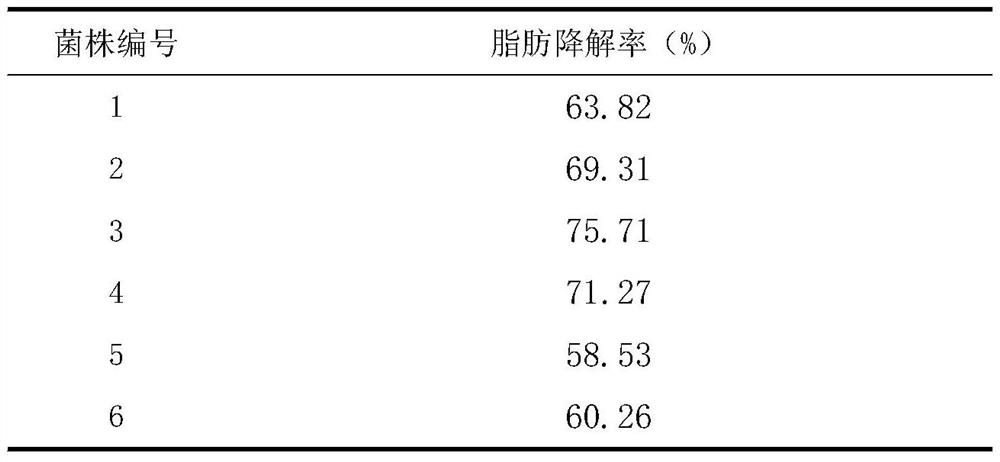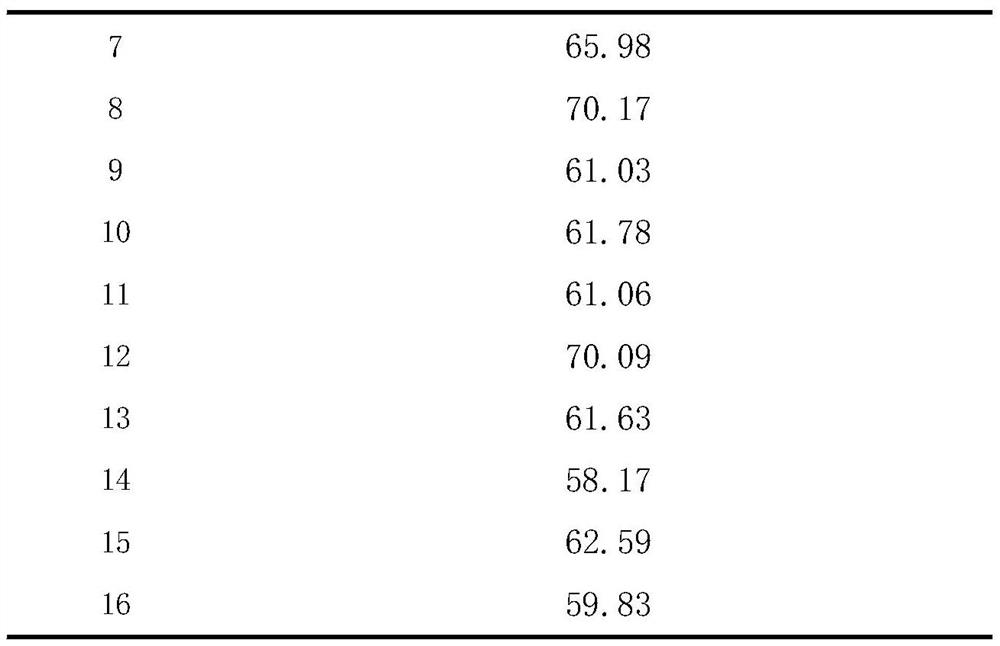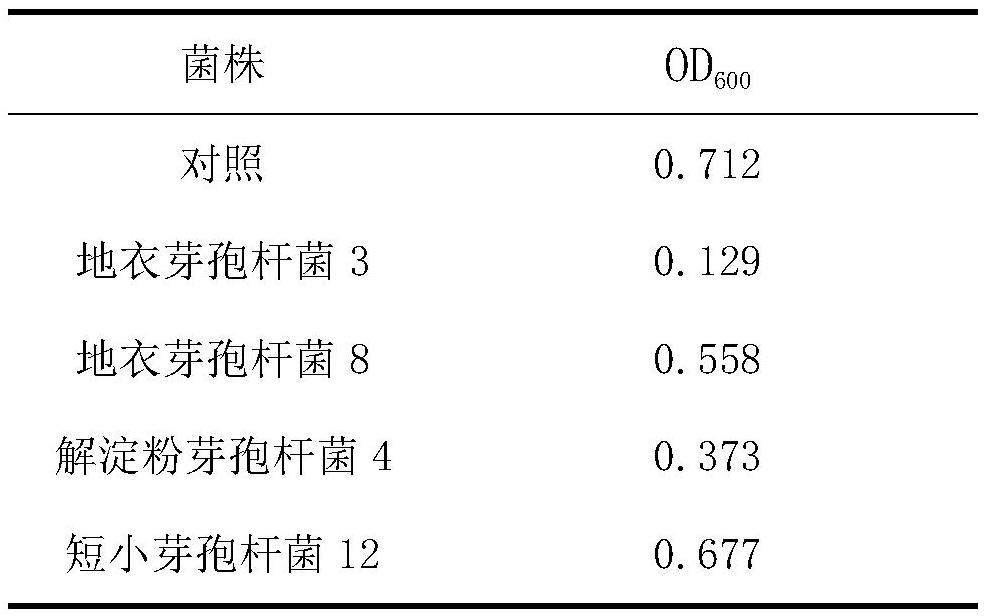Application of Bacillus and its food waste reduction and resource production in organic fertilizer
A technology for kitchen waste and Bacillus, applied in the field of biological bacterial fertilizer, can solve the problems of bad environmental sanitation, easy growth of various pathogenic microorganisms, etc., and achieve the effects of easy operation, rapid resource utilization and simple equipment
- Summary
- Abstract
- Description
- Claims
- Application Information
AI Technical Summary
Problems solved by technology
Method used
Image
Examples
Embodiment 1
[0041] Screening and Identification of Example 1 Bacterial Strains
[0042] (1) Put 10 g of the collected soil sample near the canteen of the enterprise into a conical flask with 90 ml of glass beads aseptic water, shake it at 200 r / min at 30 ° C for 30 min, put it in a water bath at 80 ° C for 10 min, and then press the gradient Serially diluted and spread on LB plates. The coated LB plate was cultured at 28°C for 3 days, and different single colonies were picked, separated and purified by streaking on the LB plate for 3 times, followed by microscopic examination, and the strain with spores was selected.
[0043] (2) Inoculate the bacillus isolated in step (1) into LB medium respectively, cultivate for 16 hours, and obtain the seed liquid;
[0044] (3) Use the kitchen waste collected from the enterprise canteen as the culture substrate, inoculate 10% of the seed solution in step (2), ferment at 55°C for 48 hours, and detect the changes in the fat content of the fermentation ...
Embodiment 2
[0051] (1) Salmonella typhimurium SL1344 was activated and cultured in LB medium, and shaken at 225 rpm for 12 hours at 37°C.
[0052] (2) After the 4 bacillus strains obtained by screening in Example 1 were activated and subcultured, they were cultured with LB for 14 hours at 37° C. and then centrifuged, and the cultures were collected and used as a control group. The culture supernatant and the control group were filtered through a sterile filter with a pore size of 0.22 microns for use.
[0053] (3) Add 50 μL of bacterial concentration to 5 mL of the culture supernatant of the above-mentioned 4 strains of Bacillus to 1×10 9 CFU / mL Salmonella SL1344 bacteria liquid, cultured at 37°C for 24 hours, when measuring the OD of the co-culture 600 .
[0054] The growth inhibitory effect of table 2 bacillus to salmonella
[0055]
[0056] The results show that Bacillus licheniformis 3 has a good inhibitory effect on Salmonella, and it is preserved as a patented strain.
Embodiment 3
[0057] Example 3 Biological control strains are used for composting of kitchen waste
[0058] (1) Inoculate the Bacillus licheniformis with biological control function obtained by screening in Example 2 into 1 L of LB liquid medium, cultivate it on a shaker at 28° C. and 140 rpm for 2 days, and obtain a bacterial concentration of 10 9 The CFU / mL bacterial liquid was used as the next step of fermentation seed liquid.
[0059] (2) Take 300 kilograms of kitchen waste, pass through a 20-mesh sieve after crushing, and mix with about 150 kilograms of bran after sieving, and the water content after mixing is between 45-50%.
[0060] (3) Put the mixture of food waste and bran in step (2) into a solid-state fermenter developed by Jiangsu Avenue Bioenvironmental Technology Co., Ltd., and inoculate 1 kg of lichen spores in step (1) for every 100 kg of food waste bacillus liquid.
[0061] (4) The mixture of food waste, bran and strains is heated to 80°C in the fermenter, kept for 10 min...
PUM
 Login to View More
Login to View More Abstract
Description
Claims
Application Information
 Login to View More
Login to View More - R&D Engineer
- R&D Manager
- IP Professional
- Industry Leading Data Capabilities
- Powerful AI technology
- Patent DNA Extraction
Browse by: Latest US Patents, China's latest patents, Technical Efficacy Thesaurus, Application Domain, Technology Topic, Popular Technical Reports.
© 2024 PatSnap. All rights reserved.Legal|Privacy policy|Modern Slavery Act Transparency Statement|Sitemap|About US| Contact US: help@patsnap.com










